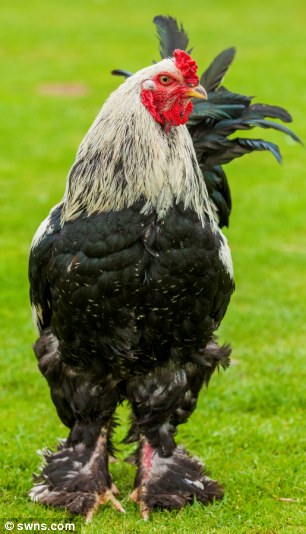To spend a week in the Azores is to fall under a spell. This cluster of verdant islands warmed by ocean currents is 900 miles from the nearest continent. From the air, it looks like a string of emeralds tossed on ruffled grey velvet.
As you descend, the patchwork landscape recalls Ireland, but with added volcanoes, stupendous cliffs, towering waterfalls and broiling springs. The architecture is unmistakeably Portuguese, often with red-tiled roofs. I'm here to concentrate on gardens - but the whole island feels gardenish. You'll find banana and tea plantations on Sao Miguel, as well as vineyards, pineapple nurseries, well-tended kitchen gardens, a unique wild flora and lush grass grazed by cattle. Sao Miguel is where we are based and it.
Parque Terra Nostra in Furnas, San Miguel, Azores
Exotic plants, tea estates, volcanic springs - the lush Azores are a natural wonder that makes me think of Prospero's island in The Tempest, full of 'sounds and sweet airs that give delight and hurt not'.
There are 250,000 Azoreans, of whom 145,000 live on this 300- square-mile island. Its capital, Ponta Delgada, bustles - up to a point. When you leave town, the pace becomes pastoral. Stockmen are at ease and gentle with their cattle. It seems pollutionfree, the mild south-west breezes instantly invigorating. Our first visit is to the Jardim Jose do Canto - an arboretum begun in the 19th century. The tree collection has spectacular sub-tropical specimens, including vast trees and bamboos with stems thicker than telegraph poles.
Blackcap warblers sing, while we gape at the trees that tower above carpets of pink crinum lilies. In Victorian times, the Azores exported seven million oranges a year, mainly to Britain. But a blight destroyed the crops and, by the 20th century, growers were turning to alternatives, including tea.
The best tea estate is Porto Formoso, not just for its wares, but for the spectacular views across sloping tea gardens to the village of the same name and a headland beyond. Our quietly spoken host explained that Orange Pekoe is expensive because it's made only from the tip bud and top leaf of each tea shoot. On the south-east side of Sao Miguel, in the Furnas Valley, heaven and hell are close neighbours. Walk with care for there are hot springs and flatulent holes, gurgling and hissing with boiling mud.
A whiff of Hades hangs around the Lagoa das Furnas, where we have lunch in a pavilion and sample a dish called cozido das Furnas, a meat and vegetable stew sealed in a canister and cooked for seven hours in a volcanic hole. Though wholesome, it has a sulphurous aftertaste. A short drive away is the Parque Terra Nostra, the island's finest garden. What makes it extra special is that we get to meet the feisty Carina Costa, who is about to take over from her father as head gardener. I suggest she'd benefit from a spell abroad, at Kew perhaps, but she's shocked at the idea of leaving the Azores for more than a week or two. 'This is where I belong,' she says. 'I couldn't bear to live anywhere else.' There's a strong sense of national pride.
But you'd expect that from land possessed by Portugal since the 1440s. And though the mainland is in economic crisis, one doesn't sense that here.
People live simply, but well; restaurants are busy, prices relatively cheap. Tourism is obviously important, but with few beaches and the absence of aggressive promotion, it's unlikely to grow very fast. But that's what give the place its charm.
After lunch, Carina conducts us through the superb parque. In winter, 600 varieties of camellia transform greenery to glorious colour, but on our visit, huge tree ferns were unfurling lacy fronds.
You need a day to do this garden justice and another to wallow in the geothermal lake. The water, fed from volcanic springs, is the colour of ochre emulsion, but stays at a delectable 25c all year. A dip is meant to ease rheumatic joints. Like all oceanic islands, the Azores has a unique natural history. Birds, even familiar ones such as chaffinches, are local sub-species. But the most interesting diversity is among the Azorean plants.
Originally, these islands were covered by laurel forest, though only fragments remain. You can still find Azorean plants, but you have to look hard. There's an enchanting pink bell flower Azorina vidalii, stately holly and many more. But the locals have embraced the alien Chinese hydrangea as their favourite national flower and consider it prettier than anything native. Seafood is a staple for Azoreans and the choice of linecaught, deep-sea fish is amazing.
I particularly enjoy angler fish, cooked in a rich fish stew, especially when eaten at the Delicias do Mar restaurant, whose ageing, but spritely, owner resembles a cast member from The Pirates Of Penzance, with faded Breton cap and Einstein moustache.
Born in Angola to emigre parents, his career began at 12 as a fisherman's apprentice on a small vessel. He came 'home' to the Azores and worked his own small boat, until recently retiring to set up the restaurant with his daughter. They're happy in business together and, despite her youth and energy, she sees her future in Ponta Delgada. For his part, he's glad to be off the sea and away from danger.
Source : dailymail

















Post a Comment